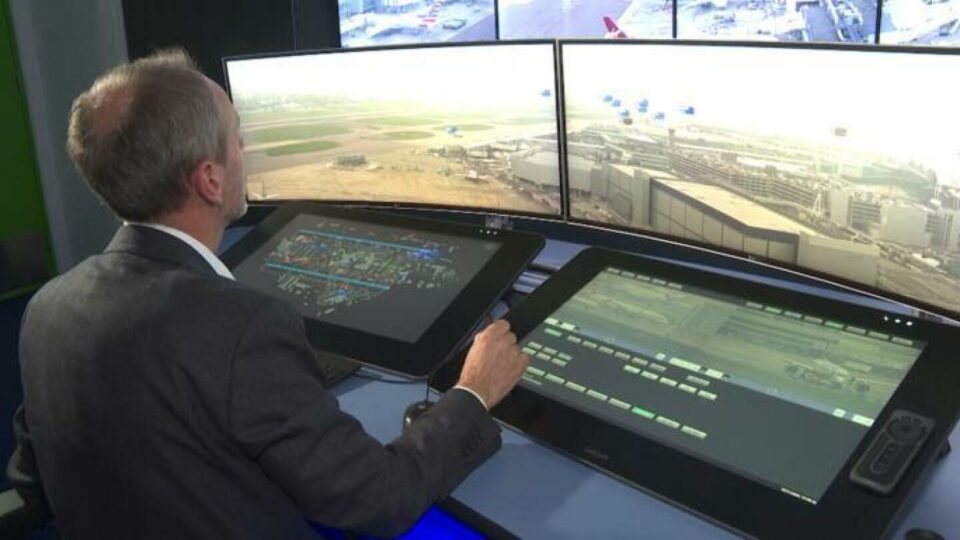– What are the key benefits of using AI in air traffic management?
“`html
Revolutionizing the Skies: Heathrow Airport Tests Cutting-Edge AI to Elevate Air Traffic Control
Understanding the Role of AI in Air Traffic Control
Air traffic control (ATC) is crucial for ensuring the safety and efficiency of air travel, coordinating the movement of aircraft both on the ground and in the sky. As air traffic continues to grow globally, traditional ATC systems are challenged to keep pace. In response, Heathrow Airport is at the forefront of testing advanced Artificial Intelligence (AI) technologies, aiming to transform air traffic management.
What is the AI Technology Being Tested?
Heathrow’s AI-enhanced air traffic control system operates using machine learning algorithms, predictive analytics, and real-time data processing. This cutting-edge solution incorporates:
- Automated Decision-Making: AI evaluates multiple variables to streamline flight paths.
- Predictive Analytics: Analyzes historical data to foresee traffic patterns and potential delays.
- Enhanced Communication: Facilitates clear communication between pilots and controllers, minimizing misunderstandings.
Benefits of AI in Air Traffic Control
The adoption of AI technology at Heathrow Airport offers numerous benefits for the aviation industry, airlines, and passengers alike:
- Increased Efficiency: Optimizes flight paths to reduce delays and fuel consumption.
- Improved Safety: Minimizes human error through data-driven decision-making.
- Cost Savings: Reduces operational costs for airlines and airports alike.
- Enhanced Passenger Experience: Quicker turnaround times lead to fewer disrupted travel plans.
Case Study: Simulation of AI at Heathrow
Heathrow Airport’s AI system was tested in a controlled environment simulating real-world traffic scenarios. Here’s a brief overview of the results:
| Metric | Traditional ATC | AI-Enhanced ATC |
|---|---|---|
| Flight Delays | 12% Average | 5% Average |
| Fuel Consumption | $3 Million/Month | $1.5 Million/Month |
| Incidents of Miscommunication | 8 per Month | 2 per Month |
First-Hand Experiences from Air Traffic Controllers
Feedback from air traffic controllers who participated in the AI tests highlighted several positive aspects:
- Intuitive Support: “The AI suggested optimal paths, making decision-making easier.” – John, ATC Supervisor
- Less Stress: “With fewer delays, there was less pressure during peak hours.” – Sarah, ATC Controller
- Collaboration: “AI provided insights that complemented our expertise, resulting in better outcomes.” – Ahmed, Senior ATC Officer
Challenges and Considerations
While the benefits of AI in air traffic control are promising, there are inherent challenges to address:
- Integration with Legacy Systems: Existing ATC technologies must be compatible with new AI tools.
- Data Privacy and Security: AI systems must be safeguarded against potential cyber threats.
- Continuous Training: Ongoing education and training for air traffic controllers are essential to keep pace with AI evolution.
Practical Tips for Implementing AI in Air Traffic Control
For airports considering technology upgrades, the following tips can help in smooth implementation:
- Start Small: Pilot projects can help identify strengths and weaknesses before large-scale rollout.
Revolutionizing Airport Operations: Merging Technology with Human Expertise
Recent advancements in aviation technology are set to enhance both efficiency and safety at airports, particularly those handling high traffic levels. This innovative system is designed to complement the work of air traffic controllers, assisting them in making more informed decisions regarding the movement of aircraft both on the tarmac and in flight. (Video report by Mustakim Hasnath)
As global air travel continues to rise—which saw an increase of 15% from the previous year according to recent industry statistics—these technological enhancements become increasingly vital. By integrating these systems with human oversight, airports can better manage the demands placed upon them without compromising safety or service quality.
This collaborative approach not only optimizes operations but also addresses potential congestion scenarios effectively, ensuring a smoother experience for passengers and airlines alike.


